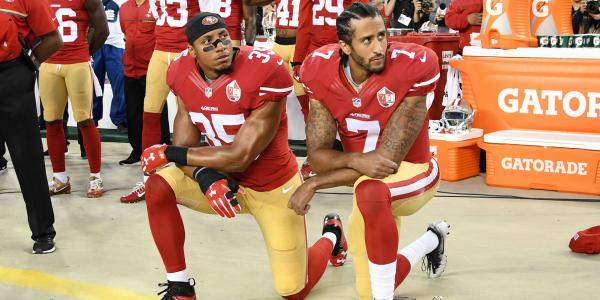If I say things are awful,
It might just be unlawful.
—Mose Allison, “I’m Not Talking” (released 1964)
The coming of Bebop in the 1940s changed not only the structure, musical nature, and creative intention of jazz. It changed the way jazz musicians related to their audiences because it changed the way the musicians saw themselves in relation to both their music and their society. Bebop was self-consciously and blatantly a musician’s music, a highly virtuosic display that the players were presenting to their audiences on the players’ terms, not the audiences.’ It was a creator-centered music. But more, it was a style of music created by black men who understood themselves not only artistically, but also politically, as being black men who were creating black music, often before white audiences. The players felt they needed to relate to these audiences in a certain way, to make the audiences aware of this change. Granted, a player like trumpeter Dizzy Gillespie still approached his audiences with something of the sly humor of the old-style black entertainer, although he was, for a time, most critical of the great Louis Armstrong for being a “mere entertainer.” Most of these players did not make an effort “to entertain.” Trumpeter Miles Davis probably symbolized and embodied this new attitude more famously and strikingly than any other jazz musician of his cohort: ignoring his audience, frequently with his back turned toward them, unfriendly to hangers-on, critics, and aficionados, brooding, aloof, outspoken, intimidating, profane, at times, downright evil. Davis was the new breed, the new black male personality, the new “game face,” as it were, the birth of the cool. “I am not here to please,” Davis seemed to be saying by his demeanor, “I am here to play. And that is all I owe you, my playing, nothing else. I am not here to be liked.” As James Baldwin pointed out, “it [is] a great part of the American Negro’s education (long before he goes to school) that he must make people ‘like’ him.” And it is particularly the case that if black people are around whites, or find their livelihood dependent on whites (which most of us do), it is essential that they are likable. The Italian Americans among whom I grew up would always compliment me, my mother, and my sisters by saying that we were not “troublemakers.” When I heard this as a boy it would infrequently but perversely cross my mind that I wish we were.
In some ways, the current wave of African-American football players kneeling during the pre-game performance of the National Anthem replicates the Bebop revolution that so changed the public persona of the black male jazz musician. Now it is black players demanding that their audiences, the press, even the owners, recognize that their attitude toward what they are doing as public performers is not the same as their white peers, or what many whites may wish for their attitude to be. Specifically, the kneeling itself, started by former San Francisco 49ers quarterback Colin Kaepernick, is a highly stylized political gesture. Kaepernick launched his protest by sitting but then changed to kneeling. It was perhaps more fitting for a football player to kneel, as kneeling figures in his sport: the player who catches the ball on a kickoff return may kneel in his own endzone if he thinks he cannot make a success return of more than 20 yards; a quarterback kneels in the closing seconds of a game if his team is ahead. It is called running out the clock. Kneeling is organically related to the physical reality of playing a football game, much more so than sitting (which one really does not want to do because it means you are sitting on the bench, not playing) and it was thus more natural for Kaepernick to do it. Kneeling gave his gesture of protest more of an aspect of poignancy, even made it an acknowledgement of something deeply tragic in the history of the United States that only a black person could truly understand and want to express in this way that seems to be deferential and mocking, determined and humble, reverential and revolutionary in the same instance. To make a black person on his knees symbolize defiance is perhaps one of the singularly stunning feats in recent American racial history! “I am a different kind of American and I do not disrespect the flag or the anthem; I respect them differently,” this gesture seems to say which mirrors the Bebopper’s “I am not here to please. I am here to play. And that is all I owe you.” What has made the Kaepernick gesture so remarkable is that, unlike the Bebopper’s which was so genderized and so totalizing as a persona, the kneeling has caught on with women, teens, children, even some whites, and is simply an act, not a psychic recreation or reconstruction. Both the football players and the Beboppers are saying as well that they are not grateful for the attention of whites or for white admiration of their skills. This is an exchange system, as economists such as F. A. Hayek have told us. The Beboppers and the football players offer the best display of their skills and the audiences pays. That is the exchange. It might be said that this lack of gratitude was easier for black jazz musicians to express as they were performing for hipster audiences who were more likely to be amenable to such iconoclasm. But as the saying goes, people vote with their feet. When jazz became Bebop, an art music, it lost the dancers, the people who wanted the music’s main aim to be pleasing them. They all left to follow some other audience-centered music, and jazz lost a considerable share of the music market. Transformation did not come without a price, what the economists call “a tradeoff.” There is likely to be a tradeoff in football as well.





